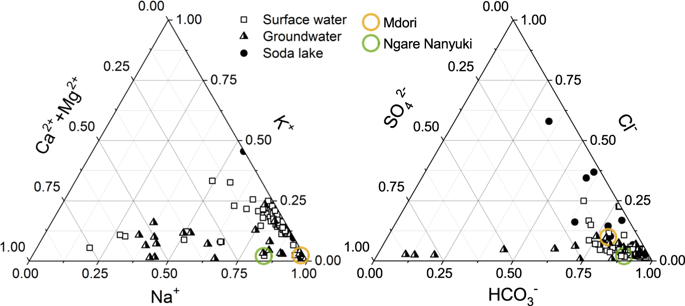npj Clean Water ( IF 11.4 ) Pub Date : 2018-12-03 , DOI: 10.1038/s41545-018-0026-6 Andrea I. Schäfer , Junjie Shen , Bryce S. Richards

|
Dissolved contaminants such as ions or organic matter require advanced technology for effective removal. Technologies such as membrane processes are to date absent in remote areas of developing countries, in part due to the absence of a reliable electricity grid to power such technologies, but also due to the large distances to be served in remote areas. By directly coupling a nanofiltration system with solar energy, the energy provision and storage obstacle can be resolved. Here, two very challenging natural waters were treated to drinking water standard without requiring permanent infrastructure: both water samples had very high concentrations of fluoride (50–60 mg/L), while one of them also had a high total organic carbon content (255 mg/L). In both cases the WHO guideline value of 1.5 mg/L for fluoride was achieved with the chosen membrane. The solar irradiance provided an unsteady power source, which did not impact on water quality in a significant manner. Given the somewhat extreme characteristics of the source waters, making such waters potable effectively increased the available water quantity. The technical feasibility of such a solar-powered ultrafiltration and nanofiltration hybrid system was demonstrated in terms of produced drinking water quantity (1200 L per solar day), water quality and specific energy consumption. While such state-of-the-art technology offers great potential towards the provision of clean water in rural areas, the remaining obstacles for effective implementation of such technologies are predominantly non-technical.


























 京公网安备 11010802027423号
京公网安备 11010802027423号